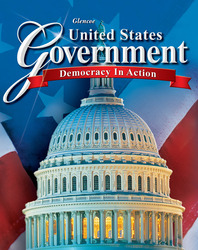United States Government: Democracy in ActionChapter 21:
Social and Domestic PolicyStudent Web Activity Lesson PlansIntroduction
By the early 1960s, many rivers and lakes in the United States were polluted, smog engulfed major cities, oil spills polluted beaches, and the heavy use of pesticides and fertilizers were contaminating groundwater and endangering wildlife. Congress passed several laws mandating reductions in emissions and prohibiting the discharge of harmful amounts of dangerous chemicals into navigable waters. In this activity, students will learn about the catalyst for environmental protection, Rachel Carson's Silent Spring. Lesson Description
Students will explore a Web site detailing the history of Rachel Carson's Silent Spring. They will answer four questions and then make a list of five ways they can help the environment. Instructional Objectives
- Learners will identify the harmful effects of DDT publicized by Rachel Carson's book Silent Spring.
- Learners will comprehend how the book gave rise to the environmental movement.
- Learners will brainstorm ways that they can help the environment.
|
Student Web Activity Answers
- Rachel Carson was a renowned nature author and a former marine biologist with the U.S. Fish and Wildlife Service.
- DDT was developed in 1939. It was first widely used during World War II to clear South Pacific islands of malaria-causing insects for U.S. troops and to de-louse troops in Europe.
- Teale warned, "A spray as indiscriminate as DDT can upset the economy of nature as much as a revolution upsets social economy. Ninety percent of all insects are good, and if they are killed, things go out of kilter right away."
- Her research concluded that DDT "entered the food chain and accumulated in the fatty tissues of animals, including human beings, and caused cancer and genetic damage; killed insects for weeks and months, and not only the targeted insects but countless more; remained toxic in the environment even after it was diluted by rainwater; irrevocably harmed birds and animals and had contaminated the entire world food supply."
- Students' lists will vary. Encourage them to display their finished posters throughout the classroom, school, and community.
|
 | 




